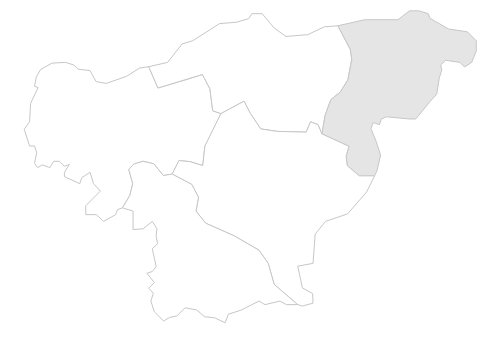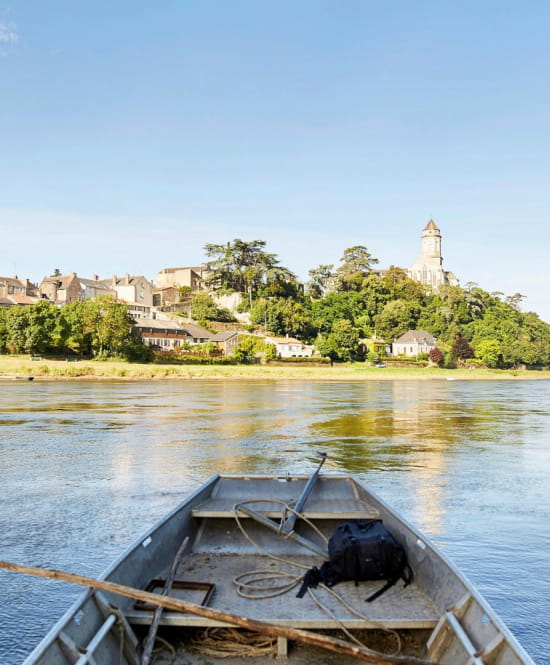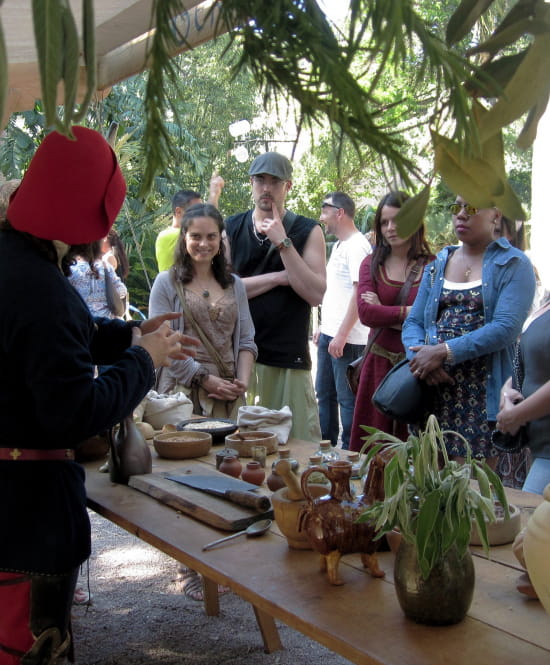

Val de Vienne experience
Get away in the natural surroundings of the Val de Vienne where many unusual places await you. To the horizon, beautiful landscapes offer you a selection of hikes and cycling routes. Today, several tours allow the famous pilgrimage route of Saint-Jacques-de-Compostelle linking the village of Sainte-Maure-de-Touraine to Antogny-le-Tillac. Along the road of local products, make a gourmet escape by following the labelled biking round Bike and Cheese. The authentic Sainte-Maure-de-Touraine PDO goat cheese perfectly matches with the AOC Chinon wine. Along the way, do not forget to visit the medieval village of Crissay-sur-Manse which is classified among the most beautiful villages in France. Find wonderful troglodyte and religious sites such as the fascinating Courtineau Valley and its Notre Dame de Lorette Chapel or also the former Collegiate Church of Roches Tranchelion. Another story, another site: relive the tragic destiny of the martyr village of Maillé at the Maison du souvenir. Further south, during the summer, admire large-format paintings during the essential Pussifolies event.
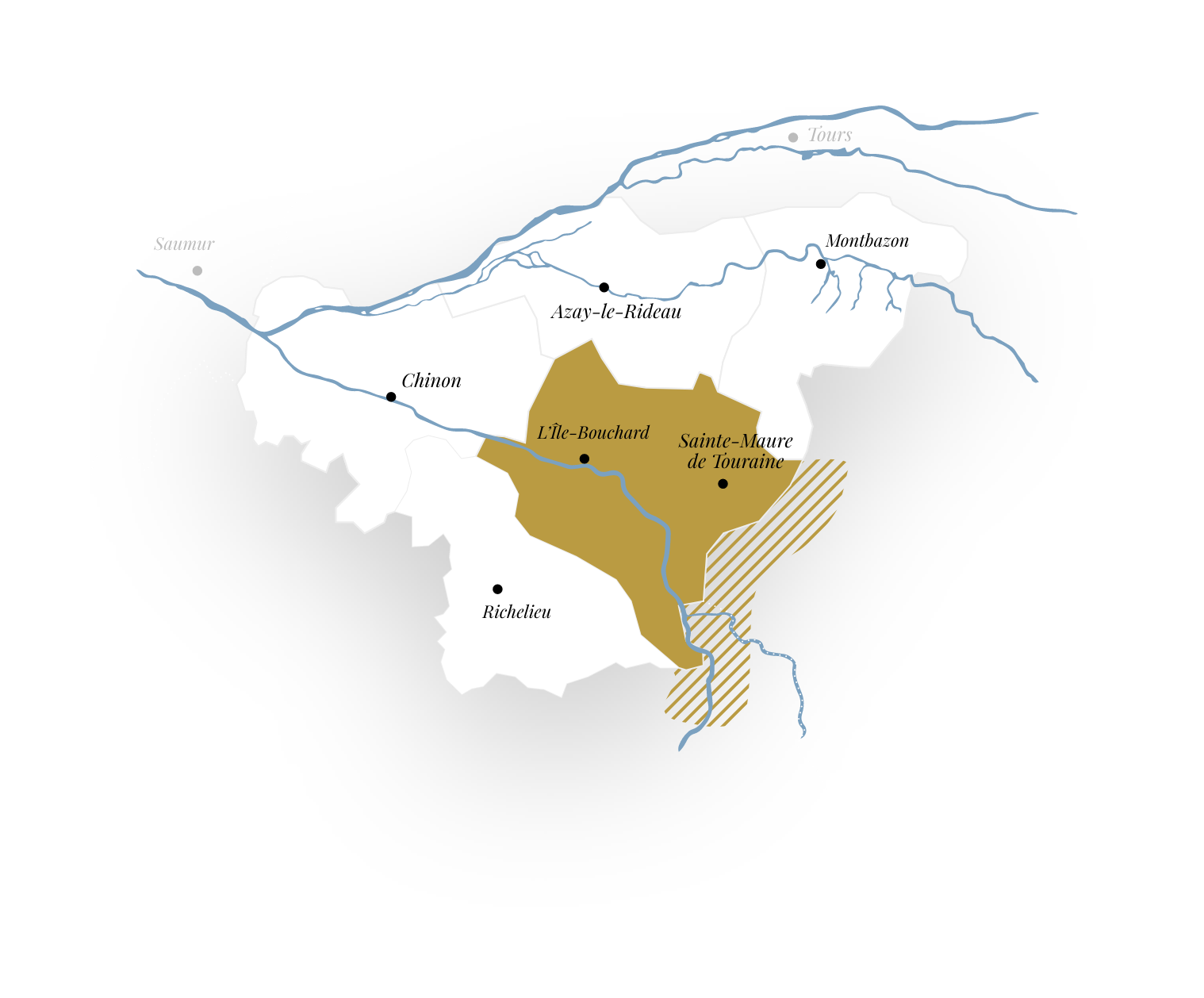
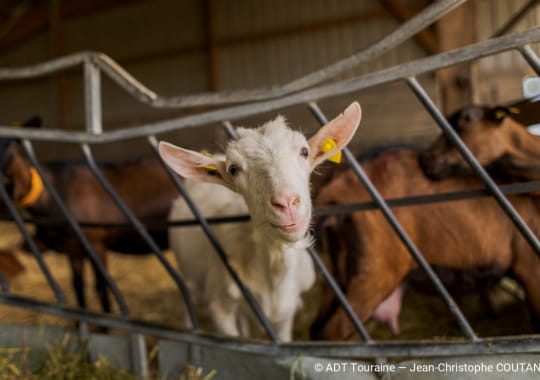
Let yourself be seduced by the natural setting of the majestic and peaceful river linking Antogny-le-Tillac to Sazilly. From the paths of Saint-Jacques de Compostelle to the tasting of local products, a selection of activities and architectural heritage await you.
The city of Sainte-Maure de Touraine AOP goat cheese is both a gastronomic and tourist city. Do not forget to visit the performance space of the Passerelles and learn the manufacturing secrets of this truncated cheese, without forgetting the surrounding goat farms. Go to the historic heart of the city and discover the monumental gates of the Halles in the centre of the square built in 1448. Next to it, look at the Castle of Rohan built around 990 by Foulque Nerra. The neo-Gothic church is dedicated to Saint Blaise, rebuilt in 1865 on the 11th-century crypt.
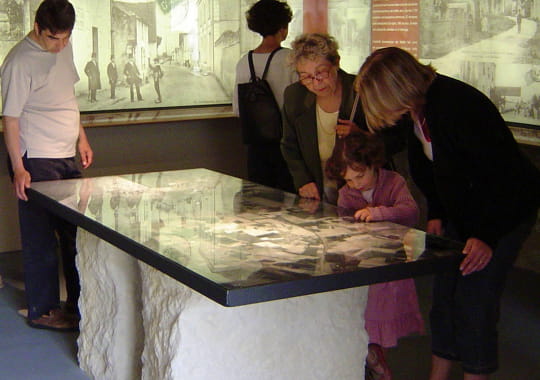
Not far from there, get to the heart of the tragic history of the martyr village of Maillé during the 2nd World War. On August 25, 1944, while Paris celebrated its liberation, 124 inhabitants were murdered by German soldiers. With more than 250 documents, the Maison du Souvenir makes known and recognized the fatal destiny of its villagers. As you get closer to the river, in the direction of Nouâtre, you can see three towers as well as pieces of surrounding walls reminding you that the village was a feudal citadel of the 11th and 12th centuries. A few kilometres to the south, in Antogny-le-Tillac, you can admire the 11th- and 12th century Saint Vincent Church, a Roman foundation having a vaulted choir with a dome on pendentives and surmounted by an octagonal bell tower.
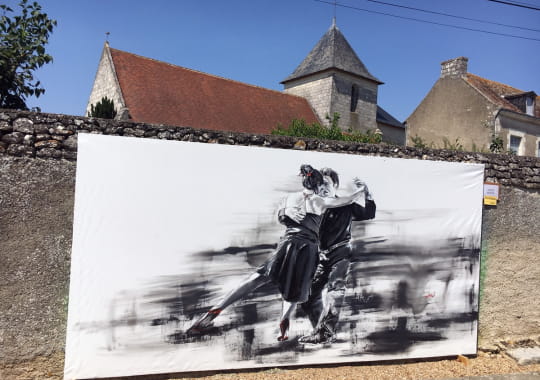
On the way up the Vienne, make a stop in the streets of Pussigny, famous for the exhibition of many paintings made during the summer festival of the Pussifolies Grand Formats. At the confluence of the Vienne and the Creuse, Ports-sur-Vienne is rich in its historical past. The landscape refers to the river navigation of travellers and goods whose tiles and lime were used for the construction of buildings.
The church of Saint-Blaise in Marcilly-sur-Vienne is a beautiful building from the late 15th century. This is thanks to the De la Jaille family, lord of the place and of the Castle of the Motte, that this elegant Gothic-inspired decoration exists. In the village square of Rilly-sur-Vienne, the Romanesque church is dedicated to Saint Martin. The nave dates from the 12th century, its facade was rebuilt in 1870 where a Gothic chapel is located inside.
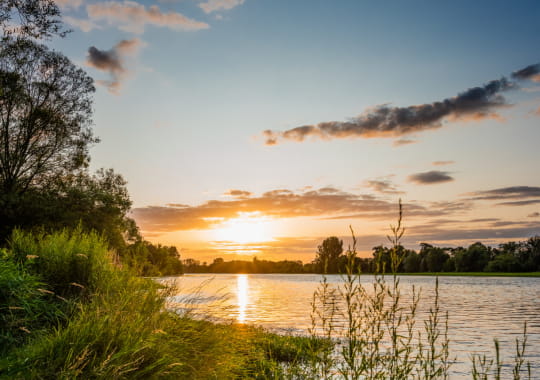
In the Bourouse valley, in Chézelles there is the outstanding Romanesque church of the 11th and 12th centuries whose choir is covered with a 13th-century Angevin vault. Coming back to the banks of the Vienne in Pouzay, enjoy the landscape during a horse riding and whisper a few words in the ears of the horses in the equestrian center. In Parçay-sur-Vienne, look at the fish-scale facade of the 13th-century Saint-Pierre church and its portal decorated with thirty-three bearded people. Located on a hillside and crossed by the Bourouse, Theneuil offers magnificent panoramas of the Vienne valley. The oldest monument is the 15th-century Church of the Holy Trinity. The Temple Castle dates from the 19th century and dominates l’Ile Bouchard. In the late 19th century, Trogues was developed through the production of lime, as being the most important of the department. Here two factories exploited the limestone extracted from the galleries. The town of Crouzilles has an exceptional medieval heritage. Many manors reflect the wealth that reigned in the 15th century. The church of Notre Dame, built in the 12th century, is non-standard because of its choir, which is misaligned in relation to the nave.
The pretty village of l’Ile-Bouchard is on two sides. On the right side, the houses lead to the church of Saint-Gilles built from 1069, place of pilgrimage where the virgin appeared to four young girls in December 1947. On the left side are located the 14th-century church of Saint Maurice from the Gothic period as well as the ruins of the Saint Leonard Prieuré built from the 11th century. The former railway station contains the Bouchardais museum displaying the history and heritage of the village. In Brizay, walking in front of the Castle of Haut Brizay, do not miss the dolmen called “Pavé de Gargantua”, near the Grosbois farm mentioned by Rabelais in his work.
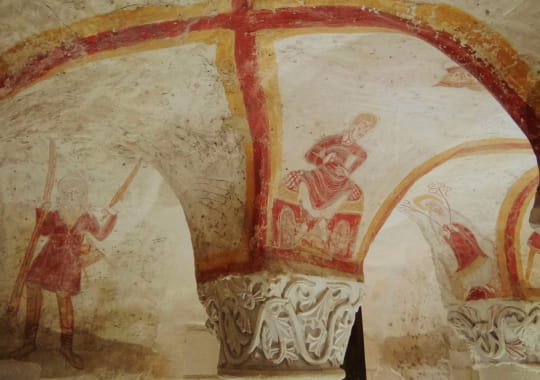
Visit the Saint-Nicolas church in Tavant and its crypt which have remarkable frescoes from the 11th and 12th centuries. These are considered as a masterpiece of Romanesque painting in France. The village of Sazilly has some great sites. Its castle has circular towers and a 19th-century home. The St Hilaire church from the beginning of the 19th century presents magnificent Angevin vaults called “Plantagenêt”. Created by the winemakers of Panzoult, the Sybille Winery is a unique and mysterious underground place. Travel through time with sculptures inspired by the work of Rabelais. At the end of your visit, enjoy a tasting of AOC Chinon wines.
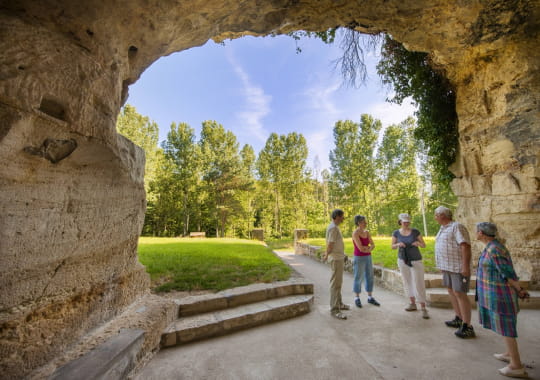
Famous for its nine wash houses lined with streams, Avon-les-Roches draw up the ruins of the huge Collegiate Church of St-Jean-Baptiste des Roches Tranchelion. Jewel of the 16th-century Renaissance overlooking the landscape on the valley of the Manse. Listed as one of the most beautiful villages in France, the charming medieval village of Crissay-sur-Manse invites you to discover its architectural heritage, its streets, its 12th-century castle and its Saint-Maurice church built in the 16th century on the ruins of a Romanesque church. Further on, the village of Neuil has an interesting architectural heritage, with its 12th-century church, its two wash houses, its troglodyte houses and its fortified castle named La Charpraie. Near Saint-Epain, walk through the valley of Courtineau populated by troglodyte houses. The Notre Dame de Lorette Chapel was dug in the rock in the 15th century and would have accommodated Jeanne d’Arc when she went to Chinon on March 6, 1429. Reaching Sainte-Maure de Touraine, the railway viaduct from Besnault to Noyant-de-Touraine crosses the Manse. It was inaugurated in 1852 by Louis Napoleon Bonaparte, future Napoleon III.











